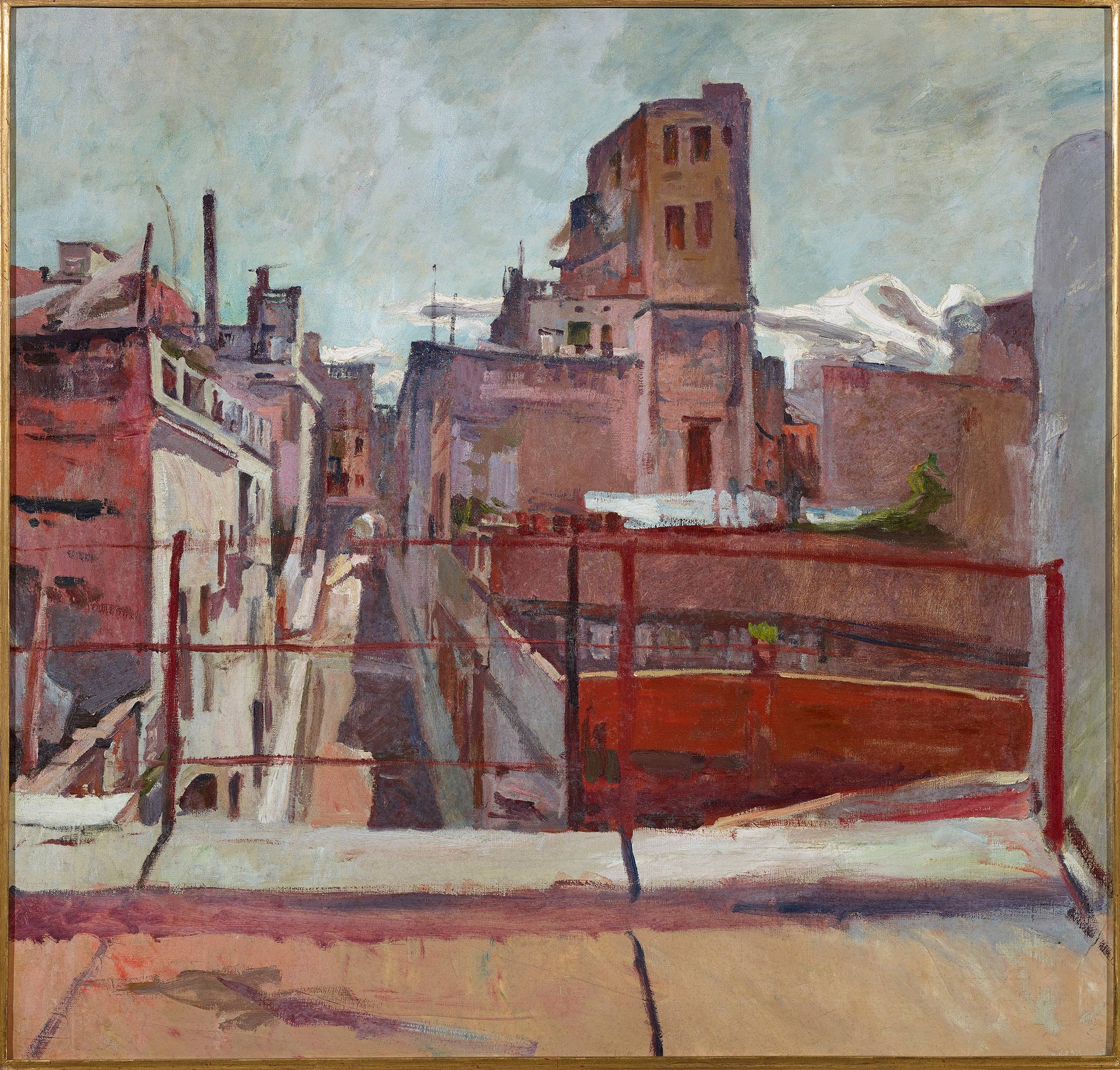
Francesc Gimeno (Tortosa, Tarragona, 1858 – Barcelona, 1927)
Carrer de la Noguera Seen from Carrer de Balmes
1927
WORK INFORMATION
Oil on canvas, 93 x 98 cm
Francesc Gimeno Arasa was a simple man who admittedly felt more at home in the country than in Barcelona and unabashedly declared that he had no faith in Paris. The desire to broaden his horizons, shared by nearly every artist of his generation, led him not to Paris or Rome but to Madrid (1884–1887), where he discovered Velázquez and had the good fortune to meet the Belgian Carlos de Haes. He later moved to Barcelona, Torroella de Montgrí and Llançà and back to Barcelona (1889), where he shied away from the "Festes Modernistes" at Sitges and the intellectual discussions at Els Quatre Gats, instead doing decorative painting to eke out a living while working privately on his own demanding compositions, few of which attracted public notice. Gimeno was a self-taught artist whose sole motivation for taking up the brushes and easel was his devotion to the craft. An insatiably curious individualist, he pieced together a muddled education based on positivist readings and vaguely artistic interests. He led a quiet, retired life in the town of Sant Gervasi de Cassoles, which became a district of Barcelona in 1897.
His painting developed outside the bounds of any "ism", although we must logically situate it somewhere on the broad spectrum of Post-Impressionism. Gimeno's raw, honest, straightforward realism is very similar to what the combative postmodern artists were trying to impose. His way of depicting reality with confident and sometimes violent brushstrokes, his incredible ability to capture light with an eloquence few of his contemporaries could match, and his spontaneous subjectivity resulted in a style that often seems to verge on Expressionism.
Gimeno was an epic master of insignificant, ordinary, popular, suburban things—in this sense he is close to the young artists of the Colla del Safrá group—and from these themes, disdained by many, he was able to extract an unexpected plasticity.
Plaça del Rei was painted during one of his most creative periods. In it he depicts this square in Barcelona from the vantage point of the old stairs leading up to the Palau Reial Major or Grand Royal Palace, beside the Chapel of Santa Ágata, begun by James II in the first quarter of the 14th century and completed at a later date. On the right we see the Gothic Revival fountain erected by the master builder Josep Mas Vila in 1853 and demolished in 1935. This was a recurring theme in Gimeno's oeuvre.
Carrer de la Noguera Seen from Carrer de Balmes is Gimeno's final work according to a document attached to the back of the painting, signed by the artist's grandson Francisco Sans Gimeno and dated June 1968, and yet it has all of the painter's customary vigour and freshness. It shows the street in the former town of Sant Gervasi de Cassoles where he lived and died, today named in his honour (Carrer del Pintor Gimeno). [Francesc Fontbona]

